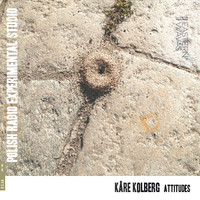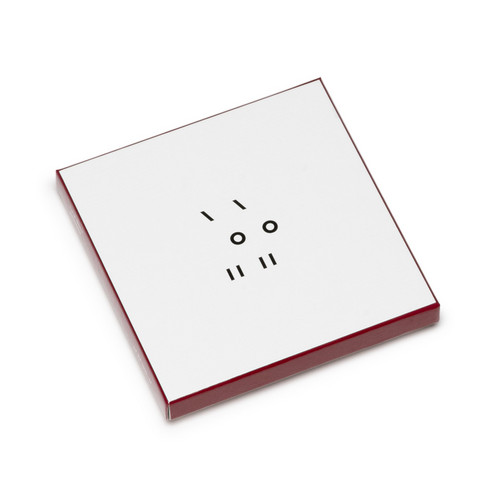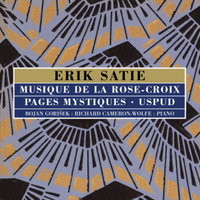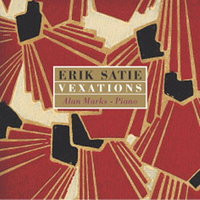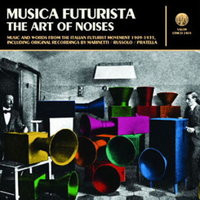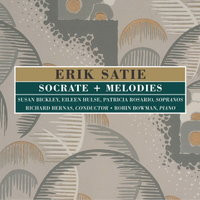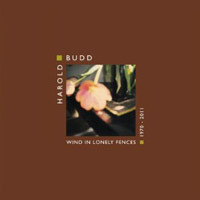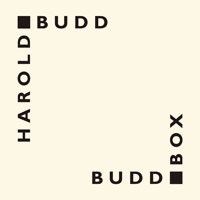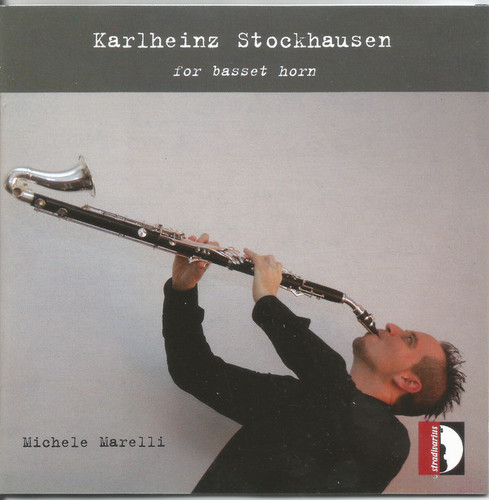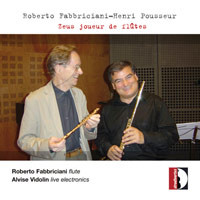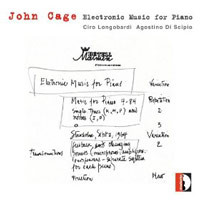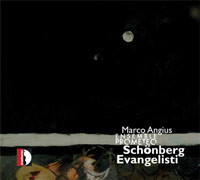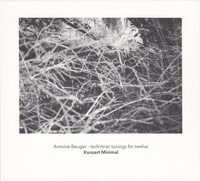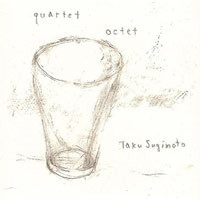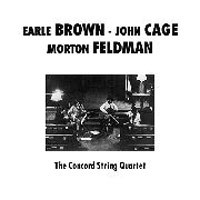Attitudes
Kåre Kolberg is a pioneer of electroacoustic music in Norway, and he was the first Norwegian composer to write a piece of computer music (in 1973). […] Kolberg’s basic ideas for electroacoustic form were shaped in his first works made in Sweden and Poland in the early 1970s, and he used a collage technique with easily recognizable elements that communicated well with audiences. Later, he extended his technique by adding a more electronic-sounding and abstract timbral palette. In Polish Ra…
Seguente
Re-release of ed. RZ LP Luigi Nono plus three remarkable recordings. All works by Luigi Nono: ("A Carlo Scarpa" for large orchestra), ("A Pierre" for contrabass flute, contrabass clarinet and live electronics), ("Guia Al Gelidi Mostri" for electronically treated winds, voices and strings). Plus an additional CD of compositions not on the original LP: "Caminantes" and "No hay caminos, hay que caminar." Regarding Nono's concept of "new listenings": "This no longer means revolutionizing the e…
Musique de la Rose + Croix / Pages Mystiques/ Uspud
Musique de la Rose + Croix is a double disc set of solo piano music collecting Satie's enigmatic Rosicrucian pieces (1891-1894), together with an instrumental version of his ballet score Uspud (1892) and the meditative works collected as Pages Mystiques (1893).
For a short period Erik Satie was appointed official composer for the esoteric Ordre de la Rose-Croix Catholique du Temple et du Graal, founded in Paris by the flamboyant mystic 'Sar' Joséphin Péladan. The first Salon de la Rose-Croi…
Vexations
Written by eccentric French composer Erik Satie in 1893, the extraordinary score for Vexations is just three lines long, yet a complete performance (840 repetitions) may last for anything between 14 and 28 hours. First performed by John Cage in 1963, this enigmatic, surreal work is today recognized as a musical milestone in the avant-garde canon.
This meditative 69 minute recording features 40 repetitions of the motif, performed by Alan Marks on piano in 1987.
Cocteau, Satie & Les Six
The celebrated L'Album des Six of 1920 may represent only a small landmark in 20th century modern music. Nevertheless the artful relationship between the young French composers of 'Les Six' and their mentors Erik Satie and Jean Cocteau forms an important cornerstone of the inter-war avant-garde.
As well as the L'Album des Six, this generous 74 minute anthology also includes music composed by Satie and Les Six for spectacles staged by Cocteau between 1917 and 1920, as well as Arthur Honegger…
Musica Futurista (The Art Of Noises)
Musica Futurista is a comprehensive collection of music and spoken word from the Italian Futurist movement 1909-1935, including original recordings made by Filipo Tommaso Marinetti and Luigi Russolo. As well as vintage free-verse readings by Futurist founder Marinetti, this popular primer includes recordings of the celebrated intonarumori (noise intoners) devised by Russolo, including a fragment from his lost landmark work The Awakening of a City.
As well as restored archive recordings, the …
Cubist Works 1913-1924
Cubist Works presents four works composed by Erik Satie between 1913 and 1924 for his collaborations with Pablo Picasso. These include piano and orchestral versions of his scores for the celebrated 'Cubist' ballets Parade (1917) and Mercure (1924), as well as a seldom-heard organ 'diversion', The Statue Found (1923).
The 60 minute anthology also includes The Puppets are Dancing, written for the French Futurist dancer and poet Valentine de Saint-Point in 1913, and the ludic Trois valses distin…
Socrate + Melodies
This acclaimed recording of Erik Satie's symphonic drama Socrate is performed by Music Projects London, and was originally released on Factory Classical. Completed in the spring of 1918, Socrate is a typically eccentric piece from avant-garde composer Erik Satie. Written in three movements for voice (four sopranos) and small orchestra (or piano), the text is extracted from three Platonic dialogues and depicts the last days of the Greek philosopher Socrates, condemned to death for corrupting the …
Dada Works & Entr'actes
A collection of Dada-related works by French avant-garde composer Erik Satie (1866-1925) including music used by Francis Picabia, Tristan Tzara, Kurt Schwitters and René Clair. An enthusiastic Dada activist in Paris between 1920 and 1924, Satie collaborated extensively with Tzara, Man Ray, Pablo Picasso and Jean Cocteau, wrote often in Picabia's journal 391, and became a sworn enemy of the Surrealist faction lead by André Breton.
Performed on piano by Bojan Gorisek, this unique selection include…
Wind In Lonely Fences 1970 - 2011
Harold Budd's music exists in that misty place between ambient, new age, and minimalist composition, where everything is gentle and nothing lasts for long. Over the past 40-plus years, he's released about 30 albums. Some are solo, some are collaborative; some are studio and some are live; some are improvised and some are structured. He famously worked with Brian Eno on the second of Eno's landmark "Ambient" series (Ambient 2: The Plateaux of Mirror), and less famously made an album with the Scot…
Budd Box
2013 release. Anthology box set containing 7 hard-to-find and critically acclaimed albums, released on labels such as Cantil, Opal and All Saints. The box includes: ‘The Serpent (In Quicksilver)’ (1981), 'Abandoned Cities’ (1984), ‘The White Arcades’ (1987), ‘By The Dawn’s Early Light’ (1991), ‘Music For 3 Pianos’ (1992) ‘Through The Hill’ (1994, with Andy Partridge of XTC), ‘Luxa’ (1996). Also includes 76 page book compiling interviews and essays about Harold’s work from writers such as…
For basset horn
Performed by Michele Marelli (basset horn): Traum-Formel (1981); Evas spiegel (1984); Susani (1984); Die 7 lieder der tage (1986); Freia (1991); In freundschaft (1977).
Zeus joueur de flutes
Alvise Vidolin (live electronics), Roberto Fabbriciani (flute)
Electronic music for piano
Agostino Di Scipio (computer e live electronics), Ciro Lombardi (piano).
s/t
Die Schachtel, for voices, chamber orchestra & tape by Franco Evangelisti / Performer: Valentina Barbarini, Elena Sorbi, / Conductor: Marco Angius / Orchestra: Ensemble Prometeo. Written in 1962-1963 and performed at the Lenz Teatro di Parma. 27’ 4’’.
Pierrot Lunaire, Op. 21 by Arnold Schoenberg / Conductor: Marco Angius/ Orchestra: Ensemble Prometeo/ Written in 1912 in Wien. Performed at Auditorium Paganini di Parma. 3’ 21’’.
Tschirtner tunings for Twelve
Antoine Beuger\'s \'tschirtner tunings for twelve\' played by Konzert Minimal. A beautiful and delicate long-form composition by Wandelweiser founder Antoine Beuger, exquisitely interpreted by the Berlin ensemble Konzert Minimal, which includes Pierre Borel (alto saxophone), Lucio Capece (bass clarinet), Johnny Chang (viola), Catherine Lamb (viola), Hannes Lingens (accordion), Mike Majkowski (double bass), Koen Nutters (double bass), Morten J. Olsen (vibraphone), Nils Ostendorf (trumpet), Derek …
Chamber Works 1992 - 2009
Double CD of composer-supervised recordings of 14 chamber pieces by a truly unique and individual voice in contemporary composition. Performed by the UK's leading experimental music ensemble Apartment House, who have championed Crane's music since the mid-90's. 'This is not minimalism. It does not take justification in 'less is more' or 'only what is necessary'. It takes us beyond those points: it is less than necessary. It says, basically, nothing is necessary. And perhaps, also, 'let's be hap…
The Art Of Living Dies...
Lack of musical material, minimalism but not for it's purposes, patterns shifting in themselves...The Art of Living Dies...The piece is performed by Michael Moser, a cult figure in Austrian new music, whose work includes significant collaborations with bands like Polwechsel and Zeitkratzer and artist such as Bernhard Lang, Peter Ablinger, Fennesz, David Sylvian (Manafon). Very slow, extremely static, the piece drives into one direction, without specific target but also without tendency to be con…
Quartet / Octet
Taku Sugimoto, guitar and composition, with Klaus Filip (sine tones), Ko Ishikawa (sho), Moe Kamura (voice), Kazushige Kinoshita (violin), Radu Malfatti (trombone), Masahiko Okura (clarinet), Taku Unami (sine tones), Nikos Veliotis (cello). 2013.
Plays Brown, Cage & Feldman
An accomplished group in the world of chamber music, the Concord String Quartet, active from 1971-1987, gained almost immediate attention from the press as well as a dedicated following, after winning the prestigious Walter W. Naumburg Chamber Music Award in 1972. Although the quartet was a classical string quartet, these rare 1973 recordings show the groups affinity for the "New York School" of avant-garde composers, like Earle Brown, John Cage and Morton Feldman, as well. Side B is entirely co…
